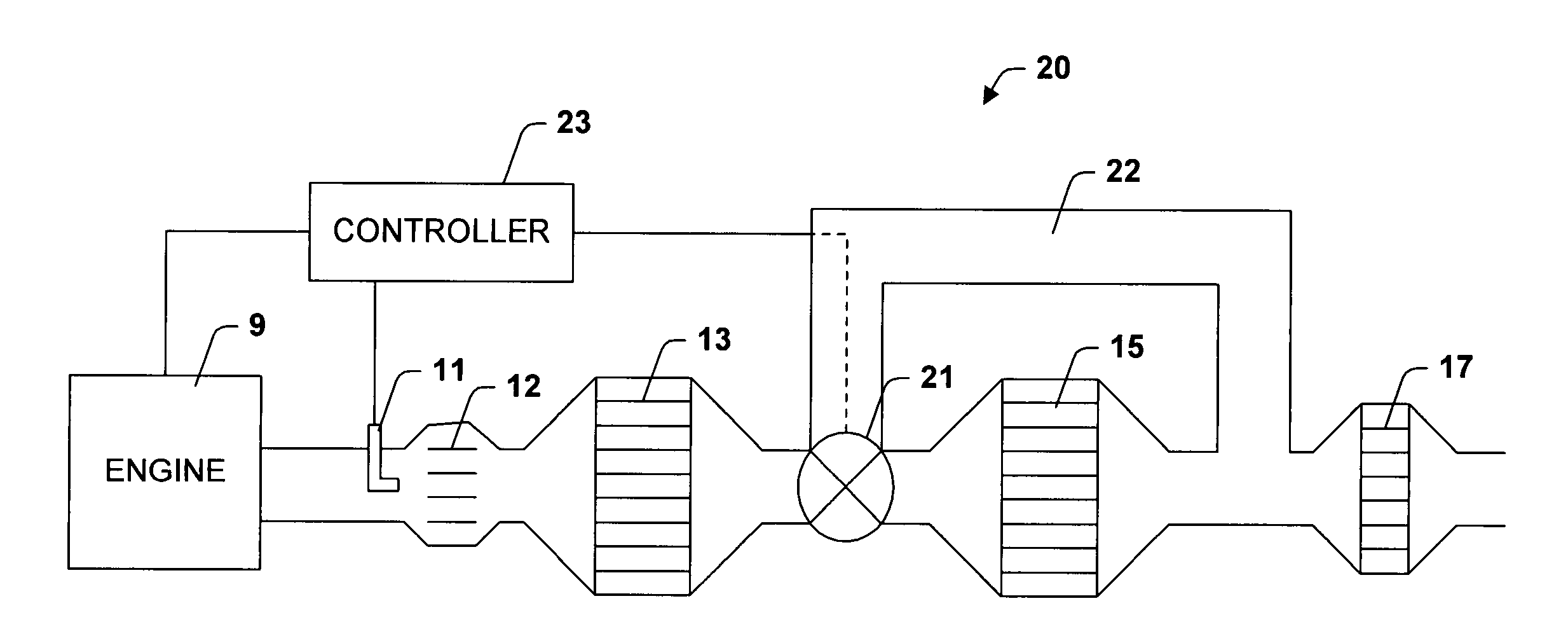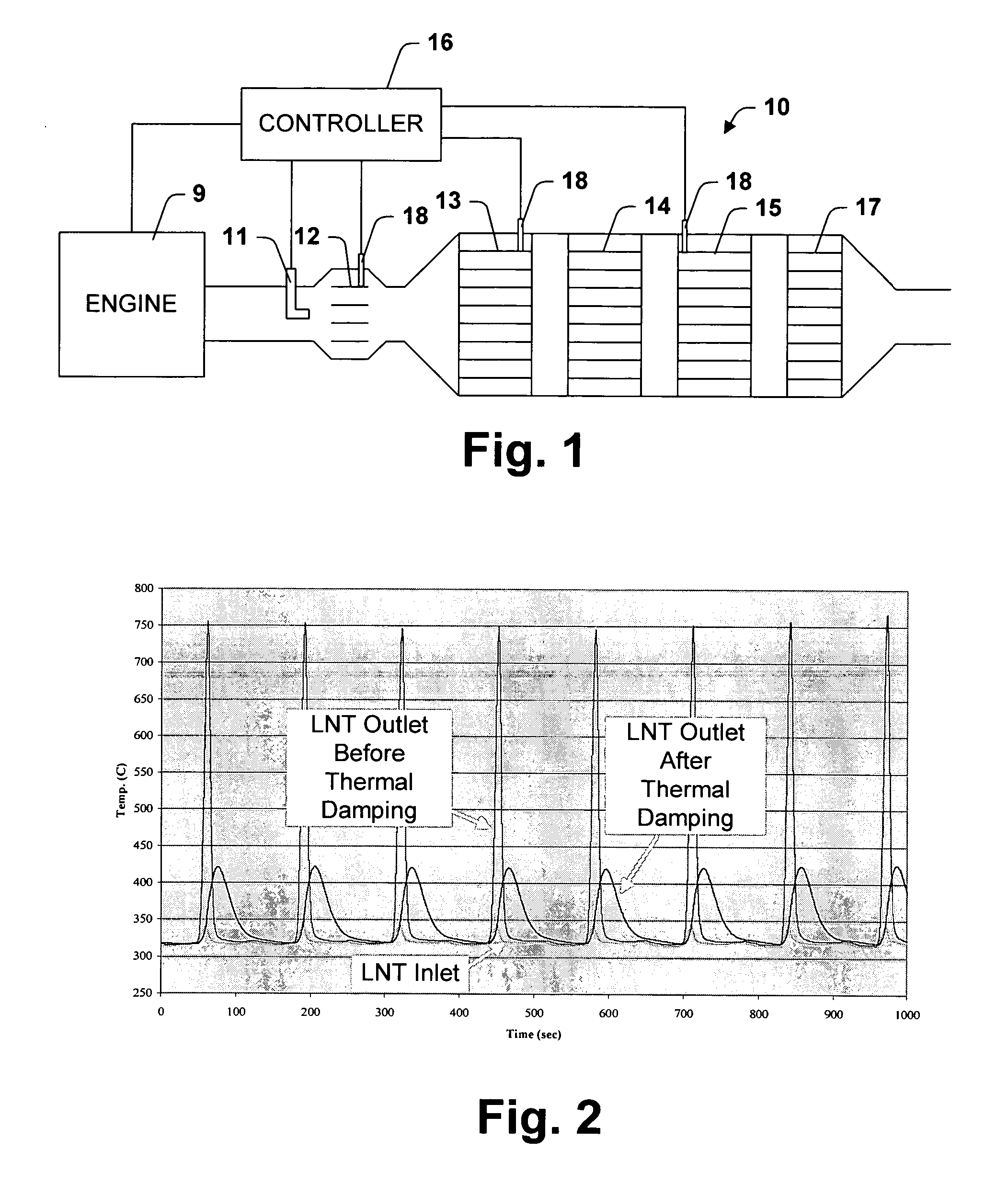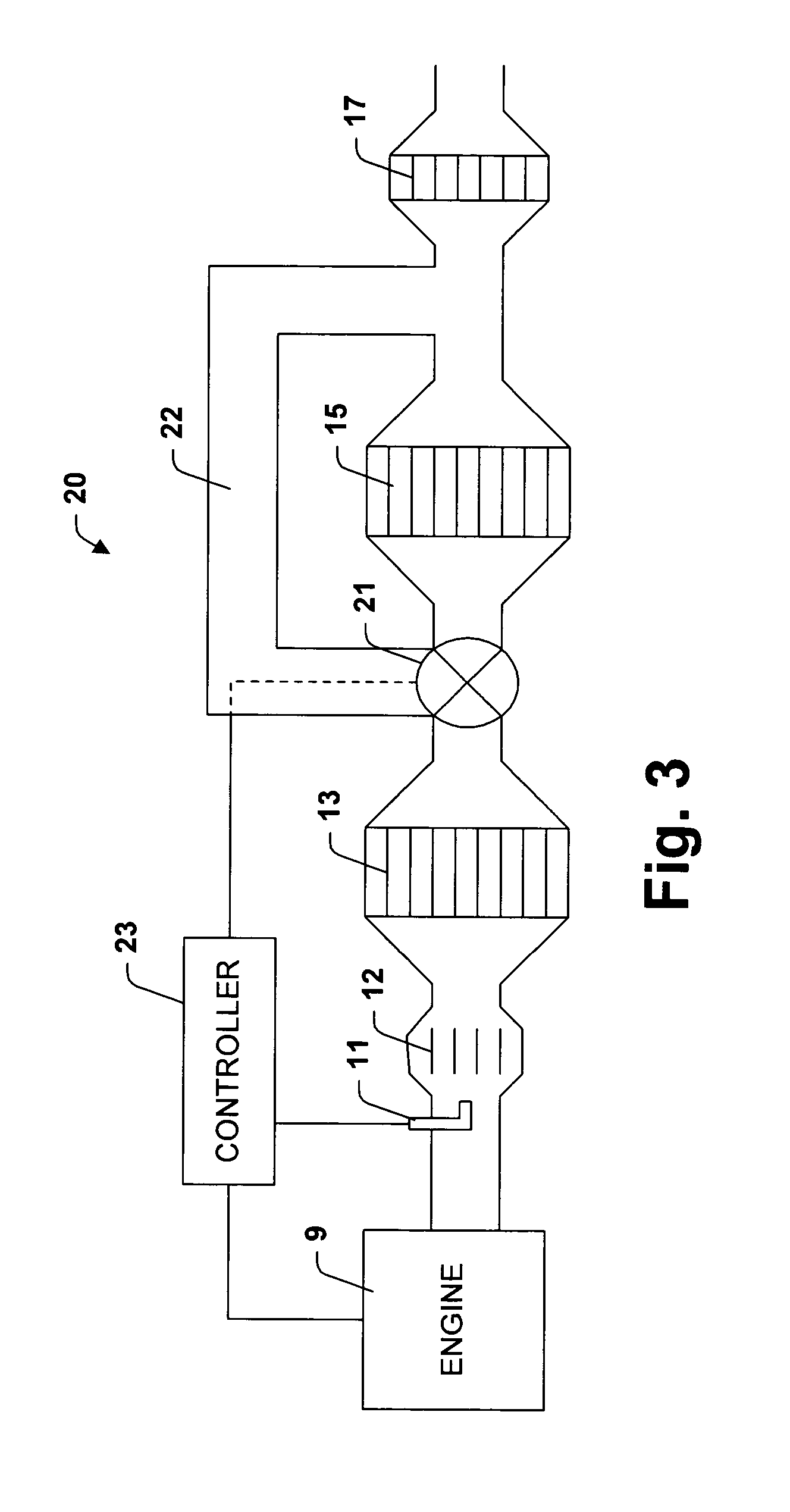Thermal management of hybrid LNT/SCR aftertreatment during desulfation
a technology of hybrid lnt/scr and desulfurization, which is applied in the direction of machines/engines, mechanical equipment, separation processes, etc., can solve the problems of damage to commonly used scr catalysts
- Summary
- Abstract
- Description
- Claims
- Application Information
AI Technical Summary
Benefits of technology
Problems solved by technology
Method used
Image
Examples
Embodiment Construction
[0022]FIG. 1 is a schematic illustration of an exemplary exhaust aftertreatment system 10 conceived by the inventors. The system 10 comprises a fuel injection port 11, an inline reformer 12, a NOx adsorber-catalyst 13, a thermal mass 14, a diesel particulate filter 15, a clean-up oxidation catalyst 17, temperature sensors 18, and a controller 16. The system 10 processes a NOx-containing exhaust from an engine 9.
[0023]The engine 9 is preferably a compression ignition diesel engine, although the invention is applicable to aftertreatment systems for other NOx-containing, oxygen-rich exhausts. For purposes of the present disclosure, NOx consists of NO and NO2.
[0024]An exhaust aftertreatment system can use any suitable reductant. The reductant is either provided through the engine 9 or injected into the exhaust, through the fuel injector 11 for example. Where the reductant is diesel fuel, the reductant preferably undergoes reforming prior to reaching the NOx adsorber-catalyst 13. Reformi...
PUM
 Login to View More
Login to View More Abstract
Description
Claims
Application Information
 Login to View More
Login to View More - R&D
- Intellectual Property
- Life Sciences
- Materials
- Tech Scout
- Unparalleled Data Quality
- Higher Quality Content
- 60% Fewer Hallucinations
Browse by: Latest US Patents, China's latest patents, Technical Efficacy Thesaurus, Application Domain, Technology Topic, Popular Technical Reports.
© 2025 PatSnap. All rights reserved.Legal|Privacy policy|Modern Slavery Act Transparency Statement|Sitemap|About US| Contact US: help@patsnap.com



